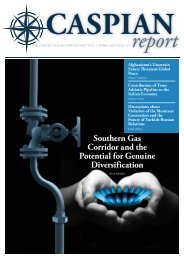You also want an ePaper? Increase the reach of your titles
YUMPU automatically turns print PDFs into web optimized ePapers that Google loves.
EU Commission<br />
President Jean<br />
Claude Juncker.<br />
NICOLO ROSSETTO<br />
130<br />
own emissions by 2030. The decision<br />
of the European Council seems<br />
in line with the Climate and Energy<br />
Package adopted by the EU in 2009<br />
and with the content of the 2011<br />
European Roadmap to a low carbon<br />
economy by 2050; however, despite<br />
the similarities the deal agreed last<br />
October is different at least for two<br />
aspects.<br />
First, only one target, the one on<br />
GHG emissions, is binding and the<br />
ETS is now clearly considered the<br />
main instrument for achieving such<br />
result in a technology neutral perspective.<br />
No specific target on the<br />
share of renewables is set for individual<br />
member state and no obligation<br />
of specific energy consumption<br />
reduction is foreseen. This represents<br />
a major overhaul of the current<br />
approach, defined by the 2009<br />
Renewables Directive and the 2012<br />
Energy Efficiency Directive. Indeed,<br />
the conclusions of the meeting explicitly<br />
recognise member states a<br />
wider flexibility over how to achieve<br />
decarbonisation, i.e. by resorting<br />
more freely to renewables, nuclear,<br />
carbon capture and storage, efficiency<br />
or a mix of them (it is stated<br />
that any member state can set its<br />
own target for renewables and efficiency)<br />
. The conclusions says as<br />
well that this wider flexibility will<br />
be managed by a new energy governance<br />
at the European level, but<br />
the proposal of the EC for a review<br />
system of the national plans implemented<br />
by the Commission itself has<br />
been seriously watered down by the<br />
Heads of State and Government.<br />
Second, it is apparent that the level<br />
of ambition of the EU is smaller today<br />
than it was six years ago. The<br />
target on GHG emissions adopted is<br />
in line only with an 80% reduction<br />
of emissions in 2050, i.e. with the<br />
lowest end of the range endorsed by<br />
the European Council back in 2009<br />
and, again, in 2011. This choice has<br />
been made despite the fact that according<br />
to the EC costs related to<br />
more ambitious targets were essentially<br />
the same . This makes clear<br />
that considerations about economic<br />
competitiveness prevailed and EU<br />
leaders did not felt comfortable










